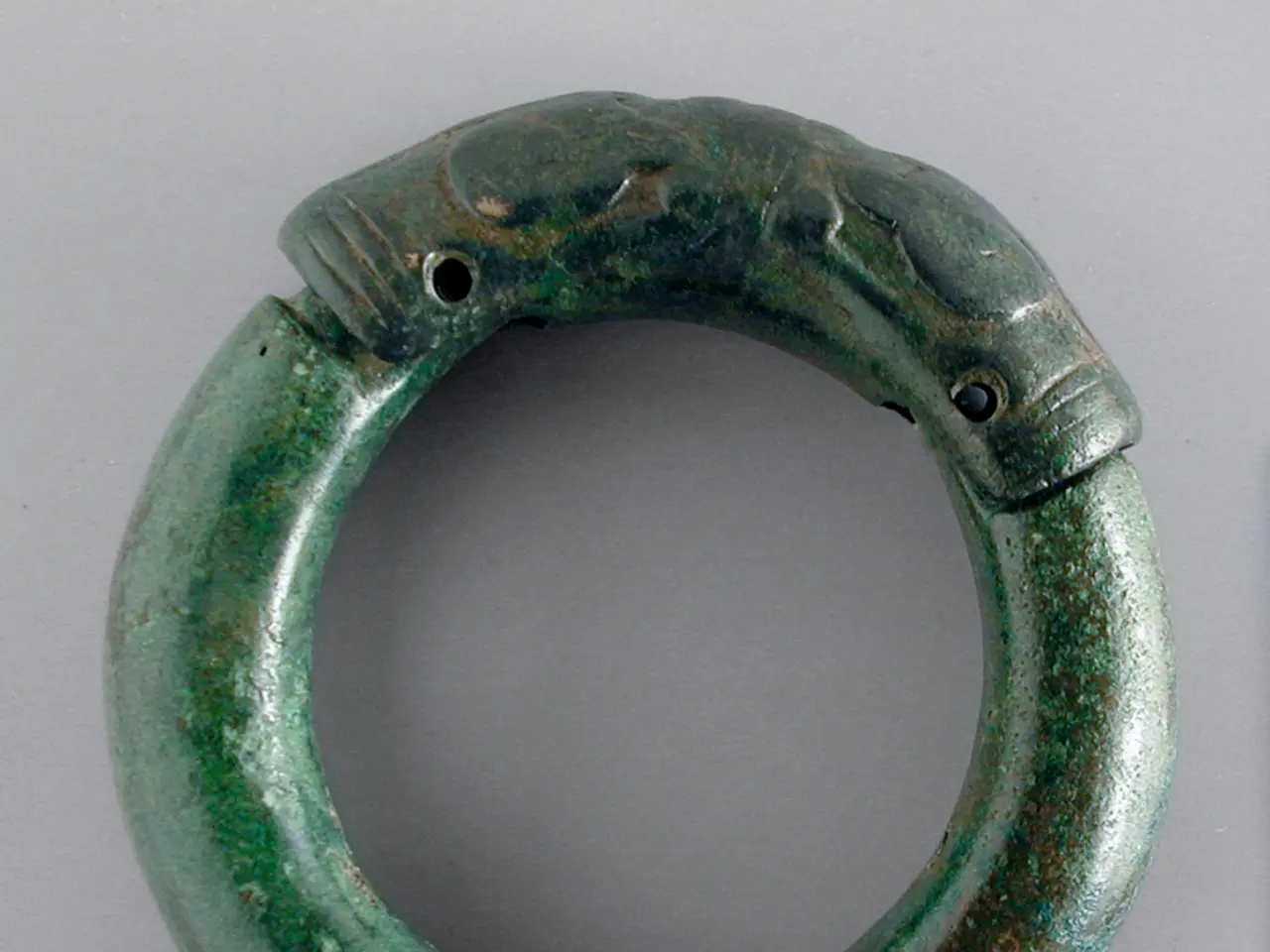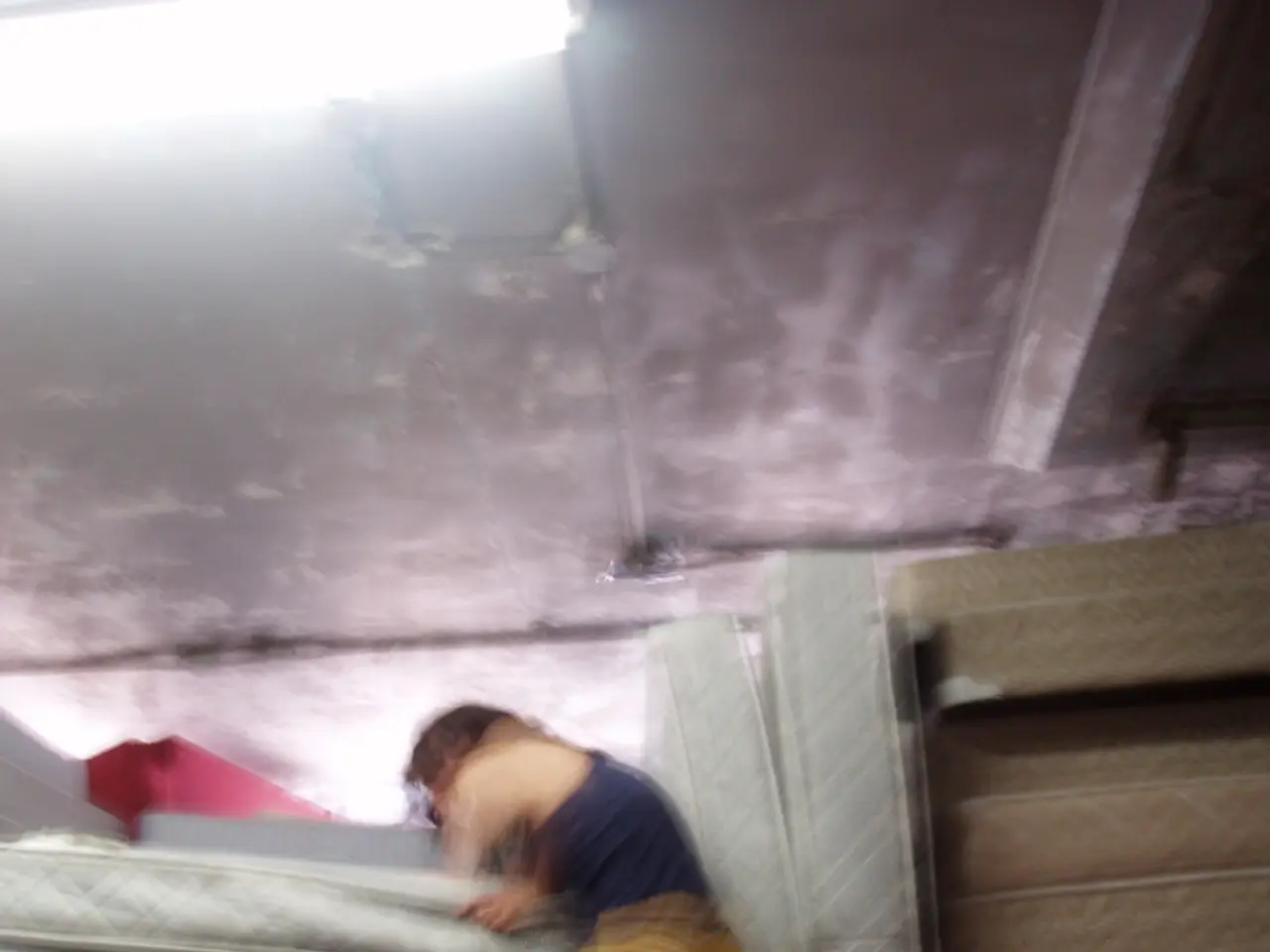Black cold sore appearances on darker skin: Images, stages, and preventative measures
Cold sores, caused by the herpes simplex virus type 1 (HSV-1), can affect people of all skin tones. However, individuals with darker skin may experience unique challenges, particularly when it comes to post-inflammatory hyperpigmentation (PIH).
Common Treatment Options for Cold Sores in Dark Skin
Standard antiviral and symptomatic treatments apply for dark skin. These include oral antiviral medications like acyclovir, valacyclovir, and famciclovir, which are prescribed for both episodic and suppressive therapy. Topical antiviral creams such as docosanol (Abreva®), acyclovir ointment, and penciclovir are also used, although oral antivirals generally have higher efficacy. Over-the-counter pain relievers and numbing creams can also provide relief from discomfort [1][3][4].
Specific Considerations for Dark Skin
The risk of PIH, which can leave dark spots or patches where the cold sore was, is higher in darker skin. To minimise this risk, gentle topical treatments should be used to avoid excessive irritation. Emollients or barrier-repair agents like aloe vera or zinc oxide can soothe the skin and may help reduce inflammation [3]. Consistent use of sunscreen and physical blockers is critical to prevent darkening of the post-inflammatory areas [2].
Management Strategies for Hyperpigmentation in Dark Skin
If hyperpigmentation occurs, dermatological treatments may be considered, including topical agents like azelaic acid, kojic acid, hydroquinone, niacinamide (vitamin B3), or chemical peels and laser therapy under specialist supervision [2]. It is crucial for patients to consult a dermatologist if lesions show signs of infection or if pigmentation changes worsen [2].
Preventative Measures
Avoiding triggers such as stress, tiredness, exposure to UV light, viral illnesses, cuts or injuries near the mouth, certain cosmetic procedures, and hormonal changes during the menstrual cycle can help prevent cold sore reactivation. Temporarily avoiding acidic, salty, and spicy foods, wearing a lip balm with SPF 30 or above, gently applying petroleum jelly to protect dry or chapped skin, and washing hands after touching a cold sore can also help prevent the spread of cold sores [1].
General Information
Cold sores can appear in places other than the mouth and are contagious. HSV-1 mainly spreads through mouth-to-mouth contact with an infected person. Once a person has HSV-1, the virus stays in their body for life, but in most cases, it causes no symptoms. Treatment can reduce symptoms and speed up healing, but there is currently no cure for the virus that causes cold sores [1].
When HSV-1 reactivates, the symptoms are usually milder, and the sores typically appear on one side of the mouth, going through several stages as they appear, burst, and heal. If a cold sore develops near the eye, medical attention should be sought immediately [1].
Several other skin conditions, such as acne around the mouth, warts, canker sores, milia, contact dermatitis, and skin cancer, can resemble cold sores. It is important to consult a doctor to confirm a diagnosis of HSV-1 and rule out other possibilities [1].
Wearing a lip balm with SPF daily can protect the skin from UV light, potentially reducing the risk of cold sore reactivation. Using antiviral treatments as soon as early symptoms appear can help prevent cold sores from developing. Applying a cold compress for 5-10 minutes a few times per day can help reduce irritation during cold sore healing [1].
- In addition to the common antiviral treatments for cold sores, individuals with darker skin may be advised to use gentle topical creams like aloe vera or zinc oxide to minimize post-inflammatory hyperpigmentation (PIH).
- Emollients and barrier-repair agents can help soothe the skin when dealing with cold sores in dark skin, potentially reducing inflammation and the risk of PIH.
- Dermatological treatments, such as azelaic acid, kojic acid, hydroquinone, niacinamide, or chemical peels and laser therapy, may be considered for managing hyperpigmentation that results from cold sores in dark skin.
- Beyond cold sores, other medical conditions such as obesity, depression, nondigestive ulcers, Alzheimer's, type 2 diabetes, rheumatoid arthritis, skin care concerns, and various other health-and-wellness issues require attention and careful management according to modern science and medical guidelines.
- Cold sores can affect people of all skin tones, but those with darker skin may experience unique challenges due to its impact on post-inflammatory hyperpigmentation.
- Understanding the predictive factors for cold sore reactivation, such as stress, tiredness, viral illnesses, and hormonal changes, can help individuals take preventative measures and reduce their risk of developing cold sores.
- Apart from using lip balms with SPF, other preventive measures for cold sores include avoiding acidic, salty, and spicy foods, wearing a lip balm with SPF 30 or above, and gently applying petroleum jelly to protect dry or chapped skin.




